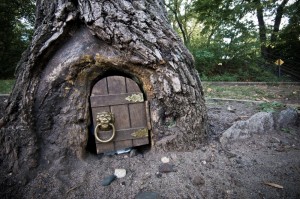Albert Einstein once quipped: “If you want your children to be intelligent, read them fairy tales. If you want them to be more intelligent, read them more fairy tales.” The same advice applies even more so to adults who should read fairy tales for themselves, often and reflectively.
Of what possible use could a fairy tale be to an adult living in a modern (or, postmodern) high tech world? Carl Jung, Marie Louise von Franz, Kathrin Asper, Jungian analysts all, and Bruno Bettelheim, a Freudian analyst, found deep value for adults as well as for children. As von Franz pointed out in her wonderful books about fairy tales (most of which can still be found on Amazon.com), fairy tales were originally meant for adults living in medieval culture as a means of entertainment and education about life and adult development during the cold and seemingly unending winter nights of northern Europe. No radio or television or movie theaters back then; instead, sitting next to the hearth and the roaring fire and telling stories. The archetypal motifs of growing up, leaving home, preparing for work and a life partner, and grappling with greed, aggression and sexuality are found in the classic unexpurgated fairy tales of the Grimms Brothers. (Grimms’ Tales for Young and Old: The Complete Stories by Jacob Ludwig Carl Grimm, Jacob W. Grimm, Wilhelm Grimm and Ralph Mannheim is a top notch translation from the German.) Many of these stories, such as “the Juniper Tree” or “the Handless Maiden”, are really not meant for children. They are too graphic and brutal, not the sort of fare, such as “Snow White”, that Walt Disney watered down and prettified for the Big Screen. (There is one fairy tale in this collection that I find to be unacceptable, beyond the pale. See if you can discover which one that is.)
Fairy tales are useful for psychotherapy and analysis in a variety of ways. By providing a focus on a favorite fairy tale or fairy tale motif from childhood, they can offer a safe way into the unconscious. They can provide amplifications for dream material. They can point the way around an impasse or developmental cul-de-sac in a person’s life. They can provide hope and inspiration when an analysand feels stuck and overwhelmed by the gigantic drives of sex and aggression. They can show fairy tale heroes and heroines exercising practical wisdom as they confront the spiritual aspects of life and death. They can show how shadow and evil enter the human condition. And, they can provide some drama and fun to the often laborious, sometimes boring, and occasionally deadly serious work of psychotherapy and analysis. (von Franz famously said that there is only one rule in fairy tales: always listen to the talking animal!)
Jung in particular found fairy tales to be of the utmost importance. In 1948 as he founded the Jung Institute in Zurich, Switzerland, he established two sets of examinations (The Propadeuticum and the Diploma Exams) for the candidates to negotiate during their analytical training; these exams were still exactly in place when I studied there from 1982 – 85. Dreams and Fairy tales were the only subjects Jung deemed worthy of including in both sets of exams. All of the exams were oral exams, involving an examiner and an expert. All, that is, except for one written 8-hour exam as a part of the Diploma Exams; the candidate had a choice as to whether the exam was a fairy tale or a dream exam. Almost all of the candidates chose the fairy tale exam to be written and the dream exam to be oral. Of course, I made exactly the opposite choice. The idea of dealing with a fairy tale for eight hours in a written examination was too daunting for me then. I no longer feel that way after teaching candidates at the San Francisco Jung Institute fairy tale analysis over the past 20 years and making use of fairy tales in psychotherapy and analysis for an even longer stretch of time. I can attest to the wisdom of Jung’s choice of fairy tales and dreams for a privileged position in analytical psychology.

